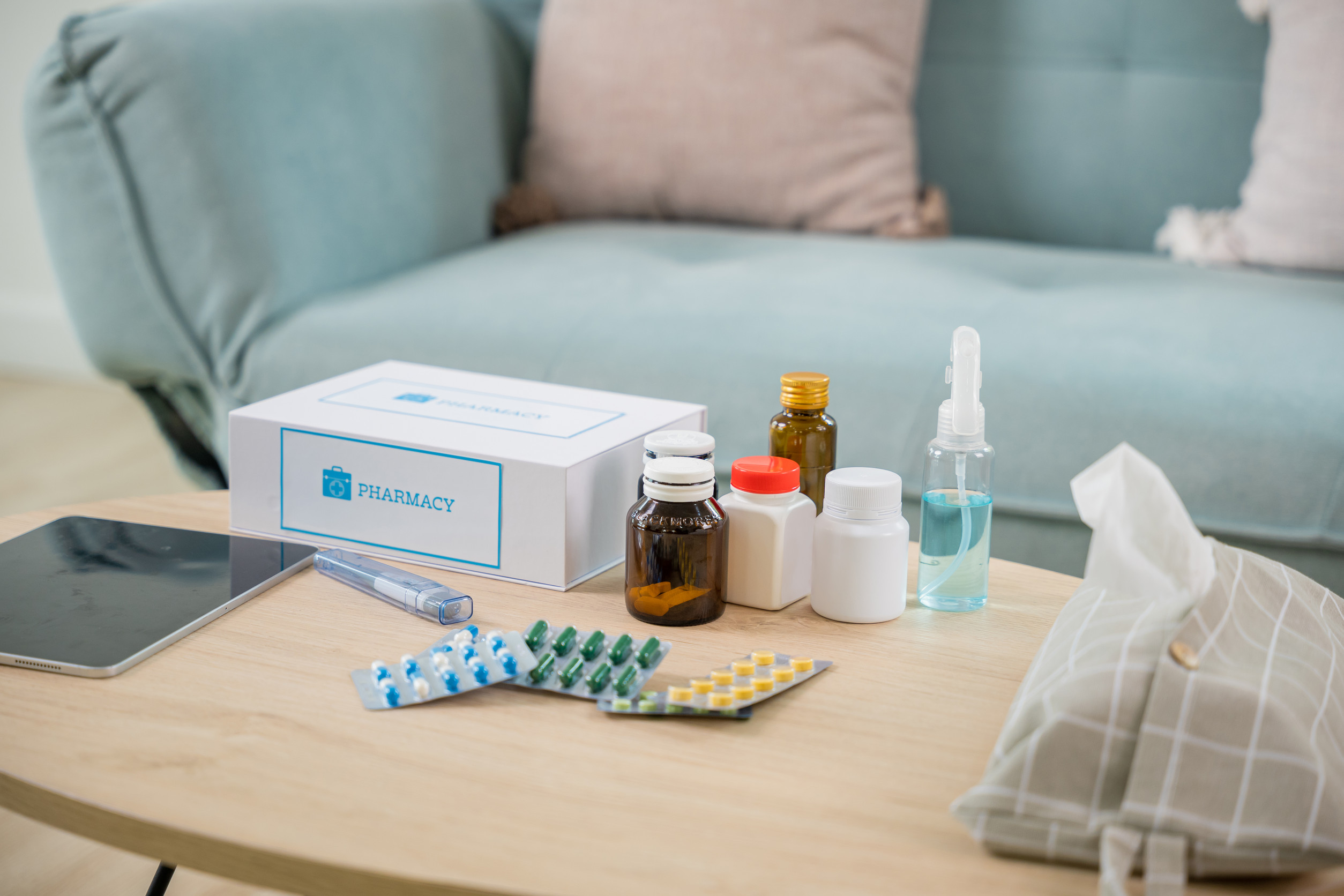In an era where healthcare accessibility and personal privacy are increasingly valued, at-home testing for sexually transmitted diseases (STDs) represents a significant advancement in sexual health management. The Chlamydia and Gonorrhea Test Kit from eDrugstore.com offers a discreet, convenient, and reliable solution for those seeking to take control of their sexual health without the barriers associated with traditional testing methods.
Understanding Chlamydia and Gonorrhea: Silent but Serious
Chlamydia and gonorrhea rank among the most common sexually transmitted infections in the United States, with millions of new cases reported annually. What makes these infections particularly concerning is their often asymptomatic nature—many infected individuals show no obvious symptoms.
Chlamydia: The “Silent” Infection
Chlamydia, caused by the bacterium Chlamydia trachomatis, is the most frequently reported bacterial STD in the United States. According to the Centers for Disease Control and Prevention (CDC), there were approximately 1.8 million cases reported in recent years, though the actual number is likely much higher due to underreporting.
Why testing matters:
- Up to 70% of women and 50% of men with chlamydia experience no symptoms
- If left untreated, chlamydia can lead to serious health complications, including:
- Pelvic inflammatory disease (PID) in women
- Increased risk of ectopic pregnancy
- Infertility in both men and women
- Reactive arthritis
- Increased susceptibility to HIV infection
Gonorrhea: A Growing Concern
Gonorrhea, caused by the bacterium Neisseria gonorrhoeae, affects approximately 700,000 Americans annually. More concerning is the emergence of antibiotic-resistant strains, which the World Health Organization has identified as a critical public health threat.
Why testing matters:
- Many infections are asymptomatic, especially in women
- Untreated gonorrhea can lead to:
- PID and increased risk of infertility
- Increased risk of HIV transmission
- Disseminated gonococcal infection affecting joints and other organs
- Pregnancy complications
- Potential transmission to newborns during delivery
The Critical Importance of Regular Testing
Despite the serious potential consequences, many people avoid getting tested for STDs due to:
- Embarrassment or stigma
- Inconvenience of clinic visits
- Time constraints
- Privacy concerns
- Cost barriers without insurance
- Lack of symptoms leading to a false sense of security
The CDC recommends annual screening for chlamydia and gonorrhea for:
- Sexually active women under 25
- Women over 25 with risk factors (new or multiple partners)
- Men who have sex with men
- Individuals with HIV
- Anyone who has experienced symptoms or had contact with an infected partner
More frequent testing may be appropriate for those with multiple partners or other risk factors.
The myLAB Box Solution: Testing Made Simple
The Chlamydia and Gonorrhea Test Kit from eDrugstore.com, powered by myLAB Box technology, offers a comprehensive solution to these barriers, making routine STD screening accessible to everyone.
How the Test Works
The testing process has been designed with simplicity and accuracy in mind:
1. Order Online Place your order through eDrugstore.com’s secure website. The ordering process is straightforward and requires only basic information to ship your kit.
2. Discreet Delivery Receive your test kit in plain, unmarked packaging that protects your privacy. The package arrives like any other mail, with no indication of its contents.
3. Simple Sample Collection The kit includes everything needed for sample collection:
- Clear, step-by-step instructions
- Collection devices specifically designed for ease of use
- Sterile materials to ensure sample integrity
- Pre-paid return packaging
For chlamydia and gonorrhea testing, the kit typically requires a simple urine sample for men, while women may provide either a urine sample or a vaginal swab. The vaginal swab method is particularly effective and no more difficult than using a tampon.
4. Laboratory Analysis After collecting your sample, simply return it in the pre-paid packaging provided. Your sample is sent to a CLIA-certified laboratory—the same type of facilities that process samples for doctor’s offices and hospitals. These laboratories use nucleic acid amplification tests (NAATs), the gold standard in STD testing, offering accuracy rates of 95-99%.
5. Secure Results Within days, you’ll receive notification that your results are ready to view through a secure online portal. The portal is protected with encryption technology to ensure your information remains confidential.
6. Follow-Up Support If your test results are positive, eDrugstore.com provides access to telehealth consultations with licensed healthcare professionals who can discuss treatment options and answer any questions you may have.
The eDrugstore.com Advantage: Why Choose Our Test Kit
1. FDA-Approved Accuracy and Reliability
The Chlamydia and Gonorrhea Test Kit offered by eDrugstore.com is FDA-approved, meaning it has undergone rigorous testing to ensure it meets high standards for accuracy and reliability. These tests utilize the same laboratory methods used in clinical settings, providing results you can trust.
The nucleic acid amplification tests (NAATs) used for analysis are considered the most sensitive tests available for chlamydia and gonorrhea detection, with accuracy rates comparable to tests performed in clinical settings:
- Sensitivity: >95% (ability to correctly identify those with the infection)
- Specificity: >99% (ability to correctly identify those without the infection)
This high level of accuracy minimizes both false positives (incorrectly indicating an infection) and false negatives (missing an actual infection), giving you confidence in your results.
2. Uncompromising Privacy and Discretion
Privacy concerns remain one of the primary barriers to STD testing for many individuals. eDrugstore.com addresses these concerns at every step of the process:
- Anonymous Ordering: Minimal personal information is required for shipping.
- Discreet Packaging: Plain, unmarked boxes with no indication of contents.
- Secure Data Handling: All personal and medical information is protected through HIPAA-compliant systems and protocols.
- Private Results Access: Secure online portal accessible only with your personal credentials.
- Confidential Support: If needed, telehealth consultations are conducted through secure, private channels.
This comprehensive approach to privacy makes it possible to maintain complete discretion throughout your testing experience.
3. Unparalleled Convenience
Traditional STD testing typically involves:
- Finding a testing location
- Making an appointment
- Taking time off work or other activities
- Waiting in a clinical setting
- Facing potentially uncomfortable interactions
- Making a follow-up appointment for results
The at-home testing model eliminates these barriers:
- No appointments necessary
- Test on your own schedule
- No need to travel to a clinic
- No waiting rooms
- No face-to-face discussions about sensitive topics
- Digital results delivery
This convenience factor makes regular testing more accessible, increasing the likelihood that individuals will adhere to recommended screening guidelines.
4. Rapid, Secure Results
Time is often critical when it comes to STD detection and treatment. The Chlamydia and Gonorrhea Test Kit from eDrugstore.com provides results typically within 2-5 days of your sample reaching the laboratory—often faster than traditional clinic-based testing, which can take up to two weeks in some areas.
Results are delivered through a secure online platform that notifies you when they’re ready. This digital delivery eliminates the anxiety of waiting for a phone call or scheduling a follow-up appointment.
5. Comprehensive Support
Testing positive for an STD can be a stressful experience. eDrugstore.com provides access to licensed healthcare professionals who can:
- Explain your results
- Discuss treatment options
- Provide prescriptions when appropriate
- Answer questions about partner notification
- Offer guidance on prevention
This support ensures you’re never left wondering what to do next after receiving your results.
Beyond Testing: A Complete Approach to Sexual Health
While testing is a crucial component of sexual health management, a comprehensive approach includes:
1. Treatment Options
If your test results are positive, treatment for both chlamydia and gonorrhea typically involves antibiotics. Through eDrugstore.com’s telehealth services, you can often receive a prescription without an in-person doctor’s visit. Both infections are curable with the appropriate antibiotics, though it’s important to:
- Take all medication as prescribed, even if symptoms disappear
- Abstain from sexual activity until treatment is complete
- Ensure partners are tested and treated to prevent reinfection
2. Prevention Strategies
Regular testing should be paired with prevention strategies:
- Consistent and correct condom use
- Reducing the number of sexual partners
- Open communication with partners about sexual health
- Pre-exposure prophylaxis (PrEP) for those at high risk of HIV
3. Regular Screening
Even after successful treatment, continued regular screening is important, especially for those with risk factors. The convenience of at-home testing makes maintaining this routine significantly easier.
Taking the First Step
Sexual health is an integral part of overall wellbeing, yet it often receives less attention than other aspects of health due to societal taboos and personal discomfort. The Chlamydia and Gonorrhea Test Kit from eDrugstore.com represents a meaningful step toward normalizing and simplifying sexual health management.
By removing traditional barriers to testing—inconvenience, embarrassment, and privacy concerns—at-home testing empowers individuals to take control of their sexual health on their own terms. The high accuracy, privacy protection, and supportive follow-up care ensure that this convenience doesn’t come at the expense of quality.
Whether you’re experiencing symptoms, have had a recent exposure, or are simply being proactive about your health, the myLAB Box test kit offered by eDrugstore.com provides a reliable, discreet path to the information you need.
Remember that regular testing is a responsible choice not only for your health but also for the health of your partners. By making testing a routine part of your healthcare regimen, you contribute to both personal and public health efforts to reduce the spread of these common infections.
Order your Chlamydia and Gonorrhea Test Kit today from eDrugstore.com and take an important step toward comprehensive sexual health management.
Chlamydia and Gonorrhea Test Kit Mailed to Home
This article is for informational purposes only and is not intended to be a substitute for professional medical advice, diagnosis, or treatment. Always seek the advice of your physician or other qualified health provider with any questions you may have regarding a medical condition.








